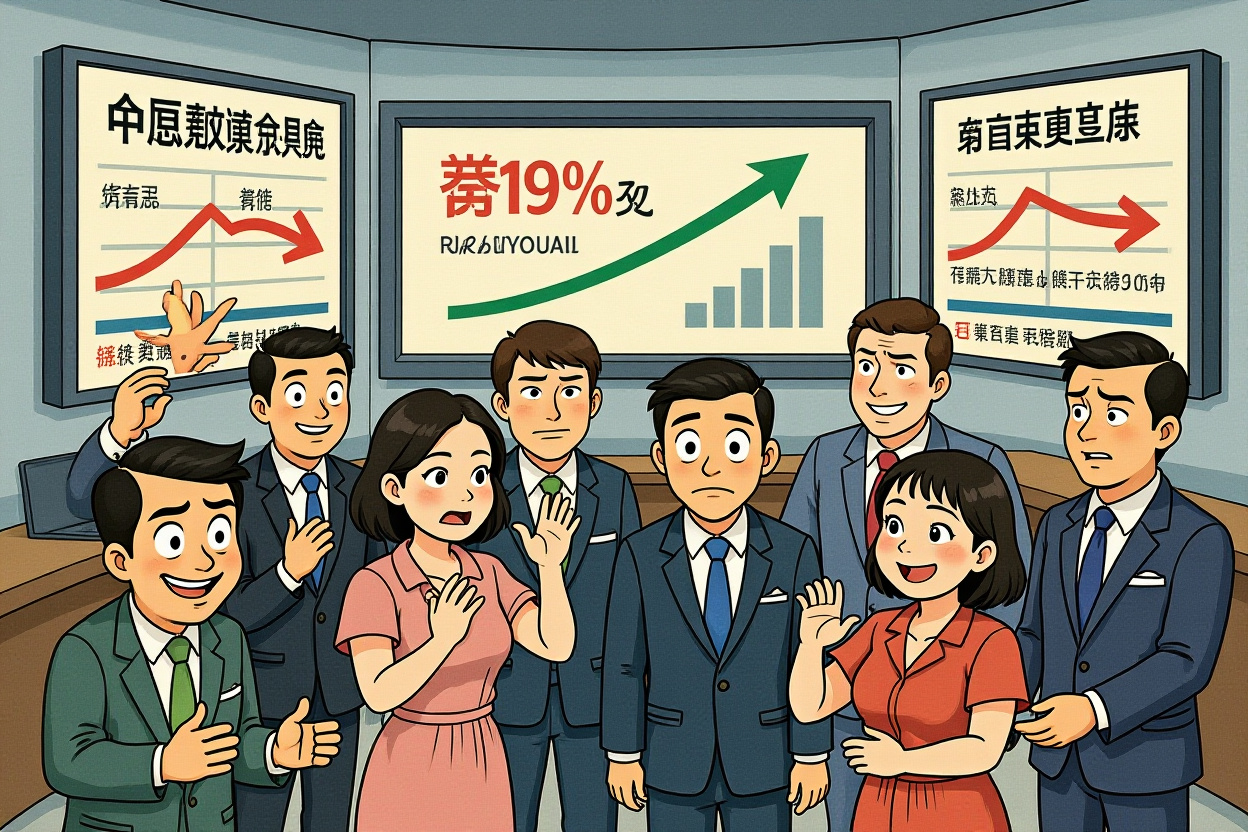The Chinese stock market witnessed significant sector rotation today as major indices closed lower while artificial intelligence plays surged. The Shanghai Composite, Shenzhen Component, and ChiNext indexes all finished in negative territory, contrasting sharply with Cambricon’s remarkable 7% gain. Meanwhile, stocks colloquially known as the ‘Yi Zhongtian’ group – Yunnan Energy, Zhongji Innolight, and Tianqi Lithium – experienced substantial declines, highlighting the ongoing market recalibration.
Market Rotation Begins: A-Shares Indices Fall as Cambricon Soars 7%, ‘Yi Zhongtian’ Stocks Plunge
Today’s trading session showcased the dynamic nature of China’s A-shares market as investors shifted capital between sectors. The market rotation begins with traditional sectors losing ground while emerging technology plays attract renewed interest. This pattern reflects changing investor expectations regarding economic recovery and technological innovation.
Index Performance Overview
The Shanghai Composite Index declined 0.45% to close at 3,259.32 points, while the Shenzhen Component Index dropped 0.56% to 11,987.45 points. The technology-heavy ChiNext Index fell 0.43% to 2,457.48 points. Trading volume remained robust at approximately 980 billion yuan, indicating active repositioning rather than broad market abandonment. The market rotation begins against a backdrop of mixed economic signals and policy expectations. Analysts note that this rotational pattern typically occurs during periods of economic transition, where investors seek to balance exposure between cyclical recovery plays and growth-oriented technology stocks.
Cambricon’s Remarkable Surge
Cambricon Technologies, a leading Chinese artificial intelligence chipmaker, surged 7.2% today, continuing its recent strong performance. The company has gained approximately 35% over the past month as investors increasingly favor AI-related stocks. Several factors drive this enthusiasm:
AI Market Expansion
– China’s push for technological self-sufficiency in semiconductors
– Growing demand for AI chips across multiple industries
– Recent contract wins with major technology firms
– Positive analyst coverage upgrading price targets
Technical Breakout Pattern
Cambricon’s stock has broken through several key resistance levels, triggering algorithmic buying and momentum investor interest. The stock now trades at its highest level since June 2022, with volume patterns suggesting institutional accumulation. The market rotation begins to favor such growth stories as investors seek exposure to China’s technological advancement themes.
‘Yi Zhongtian’ Stocks Experience Significant Pressure
The so-called ‘Yi Zhongtian’ stocks – Yunnan Energy, Zhongji Innolight, and Tianqi Lithium – faced substantial selling pressure today, declining between 4-8%. This group, named for the phonetic similarity to famous scholar Yi Zhongtian, represents companies in renewable energy, optical components, and lithium mining respectively.
Sector-Specific Challenges
Each company faces unique headwinds despite their previous popularity among investors. Yunnan Energy, a solar power company, declined 6.8% as polysilicon prices continued their downward trend. Zhongji Innolight, which manufactures optical communication components, fell 7.2% amid concerns about slowing data center investment. Tianqi Lithium, a major lithium producer, dropped 4.3% as lithium carbonate prices remained under pressure due to oversupply concerns. The market rotation begins to move away from these previously favored sectors as investors reassess near-term profitability prospects.
Valuation Concerns
Analysts note that these stocks had reached elevated valuations relative to their sector peers, making them vulnerable to profit-taking. The price-to-earnings ratios for these companies had expanded significantly during the first quarter rally, creating valuation gaps that now appear to be correcting. The market rotation begins to address these valuation discrepancies, moving capital toward companies with more reasonable multiples relative to growth prospects.
Broader Market Implications
The contrasting performance between Cambricon and the ‘Yi Zhongtian’ stocks illustrates several important market dynamics. This rotational activity provides insights into institutional investor thinking and sector allocation strategies.
Technology Versus Traditional Industries
The divergence highlights the ongoing tension between technology growth stories and traditional industrial companies. While AI and semiconductor stocks benefit from policy support and innovation narratives, renewable energy and commodity plays face more immediate fundamental challenges. The market rotation begins to reflect this dichotomy, with capital flowing toward perceived future winners while reducing exposure to companies facing cyclical headwinds.
Foreign Investor Activity
Northbound trading data shows foreign investors were net buyers of A-shares today, particularly in technology stocks. This suggests international money managers view the current rotation as an opportunity to increase exposure to China’s technology sector at reasonable valuations. The market rotation begins to attract sophisticated foreign capital, which often takes a longer-term view than domestic retail investors.
Sector Rotation Patterns
Historical analysis suggests that such rotational periods typically last 4-6 weeks before establishing new leadership groups. Several sectors show potential for outperformance in the coming weeks:
Emerging Leadership Candidates
– Artificial intelligence and semiconductor companies
– Consumer discretionary stocks benefiting from recovery
– Selected financial services companies
– Healthcare and biotechnology firms
Technical Indicators
Market breadth indicators suggest the rotation remains healthy rather than signaling broader market weakness. Advance-decline ratios, while negative today, remain within normal ranges for rotational periods. Volume patterns indicate institutional activity rather than panic selling, supporting the interpretation that this is a recalibration rather than a correction. The market rotation begins to create opportunities for investors who can identify the next leadership groups before they become consensus trades.
Investment Strategy Considerations
For investors navigating this rotational environment, several approaches may prove effective. The key is recognizing that sector leadership changes require adjusted positioning rather than wholesale portfolio changes.
Tactical Allocation Adjustments
Consider reducing exposure to extended sectors while gradually building positions in emerging leadership groups. Dollar-cost averaging into favored sectors can help manage timing risk during volatile rotational periods. The market rotation begins to reward disciplined allocation strategies rather than reactionary trading.
Fundamental Analysis Priority
Focus on companies with strong balance sheets, reasonable valuations, and visible earnings growth. During rotational periods, quality companies often get caught in sector-wide selling, creating attractive entry points for long-term investors. The market rotation begins to separate fundamentally strong companies from those that rose primarily on sector momentum.
Looking Ahead: Market Trajectory
The sustainability of today’s rotational pattern will depend on several factors, including economic data, policy developments, and global market conditions. Second-quarter earnings season, beginning in several weeks, will provide crucial fundamental validation for sector leadership changes. The market rotation begins a new phase of price discovery that should ultimately establish more sustainable sector leadership based on earnings fundamentals rather than narrative alone. Investors should monitor earnings revisions, analyst rating changes, and institutional flow data for confirmation of emerging trends. The current environment favors selective stock-picking over broad sector bets, with particular attention to companies demonstrating earnings resilience amid economic crosscurrents. Monitor corporate guidance during the upcoming earnings season for clues about which sectors possess the fundamental strength to maintain leadership positions. Consider establishing watch lists of quality companies across various sectors to capitalize on rotational opportunities as they emerge.




